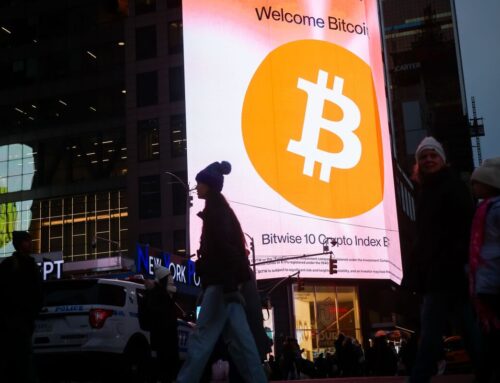A Stock Market Indicator Rarely Seen Since 1990 Hints at a Monster Rally. Here’s What Inve
April 19, 2025
The S&P 500 (^GSPC 0.13%) is currently 14% below the record high it reached earlier this year. The decline started when President Donald Trump announced tariffs on goods from China, Canada, and Mexico in February, and the losses deepened as he added new duties on steel, aluminum, and auto imports.
However, it was the 10% universal tariff and country-specific reciprocal tariffs unveiled on April 2 that truly caused the stock market to crash. The S&P 500 tumbled 12% during the next five trading days as Wall Street processed the radical shift in U.S. trade policy. Many analysts stunned by the severity of the tariffs raised their recession risk forecasts.
Stock market volatility peaked when the CBOE Volatility Index (^VIX -9.16%) reached 52.3 on April 8, one of the highest readings since January 1990. But similar readings have usually been great news for investors. The S&P 500 has usually generated monster 12-month returns following VIX readings above 50.

Image source: Getty Images.
History says the S&P 500 could stage a monster rally in the next year
The CBOE Volatility Index (VIX) uses prices from S&P 500 options contracts to measure expected volatility in the stock market over the next 30 days. The VIX is frequently called the fear gauge by financial media because volatility often coincides with panic selling. Put differently, the VIX and the S&P 500 generally move in opposite directions.
Higher readings indicate more volatility, while lower readings indicate less volatility. Since 1990, the VIX has recorded an average closing value of 19.5, though its closing values have ranged between 9.1 and 82.7. As mentioned, the VIX closed at 52.3 on April 8, signaling high volatility. But the S&P 500 has typically generated monster returns during the year following such high readings.
Since 1990, the VIX has closed above 50 on only 75 trading days, far less than 1% of the time. Importantly, the S&P 500 always increased during the next one, three, and five years, according to strategist Charlie Bilello. Put differently, VIX readings above 50 have a perfect track record for predicting upside in the stock market. The average return during those periods is listed below:
- One-year return: 35%
- Three-year return: 55%
- Five-year return: 129%
Interestingly, VIX readings above 50 also correlate with economic downturns. Each time the index has closed above 50 since 1990, the U.S. economy has been in a recession. That does not necessarily mean we are in a recession today, but it is certainly possible. Indeed, BlackRock CEO Larry Fink recently told CNBC, “I think we’re very close, if not in a recession now.”
Here is the bottom line: The S&P 500 closed at 4,983 on April 8, the day the VIX recorded a closing value of 52.3. The S&P 500 will climb 35% to 6,727 by April 2026 if its performance matches the historical average. That implies 27% upside from the current level of 5,283.
President Trump’s tariffs may prevent a monster stock market rally
Investors should bear in mind that past performance is never a guarantee of future results. President Trump paused his most aggressive tariffs for 90 days, but tariffs already imposed by the administration have still raised the average tax on U.S. imports to 28%, according to the Budget Lab at Yale. That is the highest level since 1901.
Predicting the outcome of the current situation is challenging because there is little historical precedent. With the average import tax at its highest level in over 100 years, many economists expect tariffs to slow GDP growth and raise prices, a condition known as stagflation. In total, the Budget Lab at Yale estimates tariffs will cost the average American household $4,900 per year.
Here is the bottom line: History says the S&P 500 could stage a monster rally in the next year. However, tariffs imposed by the Trump administration could have a devastating impact on the U.S. economy. Investors can reconcile those opposing viewpoints with cautious optimism. Tariffs could be much lower than advertised by the Trump administration. So, it makes sense to put money into the stock market at a measured pace today. But investors should stick to their highest-conviction stocks and be prepared to hold through further declines.
Search
RECENT PRESS RELEASES
Related Post




